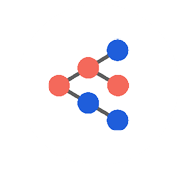This Breast Cancer Awareness Month, experts are highlighting the importance of preventive strategies in survival and recovery.
Breast cancer is the second most common type of cancer among American women. But, when detected early and in the localized stage, the disease has a five-year survival rate of 99%, according to the American Cancer Society.
Early detection includes monthly breast self-exams and regular clinical exams and mammograms.
As a healthcare or HR leader, how do you know which of your members, patients, or employees need to schedule preventative visits? And how do you know who is most likely to respond to educational outreach?
Data warehousing and predictive analytics solutions help payers, providers, employers, and advisors identify missed preventive screenings and proactively steer patients to the most effective care.
HOW DOES IT WORK?
Data analytics can identify if a member needs a breast exam or mammogram but hasn’t received one. This missed preventive screening is known as a gap in care.

Closing a gap in care is widely regarded as a key step in improving clinical and financial outcomes. Typically, realizing the benefits of closing a gap in care takes time. Gap closure increases immediate medical costs, and the savings tend to be achieved over a longer period of measurement.
Certilytics designed its predictive models to help healthcare leaders identify gaps in care and how much can be saved by closing them. With that insight, providers and payers can understand who needs preventive screenings, demonstrate the return on investment, and gain support from internal stakeholders for outreach and educational programs.
The result? Improved health outcomes and a reduction in the total cost of care.
Want to learn more?
To meet with our team of experts on how you can leverage predictive insights to transform your organization and improve health outcomes, reach out to us at [email protected].









